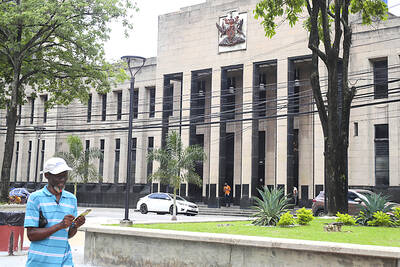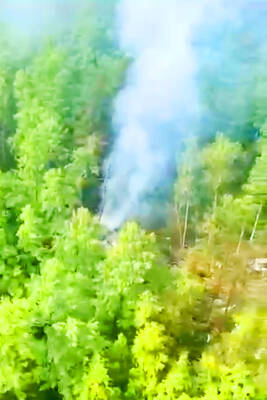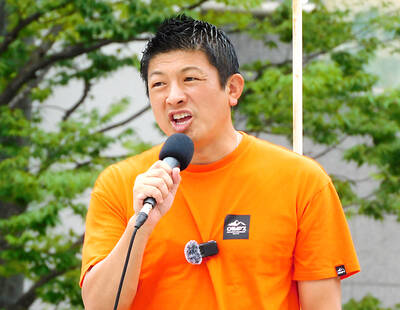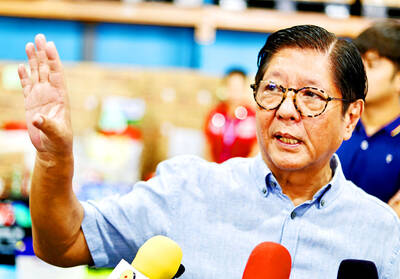Negotiators from six nations agreed on Saturday on steps to verify North Korea’s nuclear disarmament, opening the final phase in tortuous efforts to rid the North of nuclear weapons.
The agreement, reached after three days of talks, requires North Korea to finish disabling its main nuclear facility by the end of October. Meanwhile the US, China and the other three nations taking part would complete promised deliveries of fuel oil and other economic aid.
Beyond that, the envoys agreed to a robust verification team of experts who will visit North Korean nuclear facilities, review its documents and interview its technical experts, China’s envoy Wu Dawei (武大偉) read out from a press communique at the end of the meeting.
Some specifics of the verification remained to be worked out, but experts and diplomats from the six nations hoped to agree on those steps by early September, US Assistant Secretary of State Christopher Hill said.
“We would like the protocol to be reached within 45 days and, secondly, to begin verification within 45 days. We’re anticipating that, and we don’t see any obstacles,” Hill told reporters after the talks.
The agreement, if not yet complete, signals the start of the final phase of years of on-again, off-again negotiations to get North Korea to abandon its nuclear weapons program.
Beyond the October deadline for disabling North Korea’s main nuclear facility at Yongbyon, the agreement did not set a timetable for full disarmament. But the administration of US President George W. Bush is believed to be eager to see North Korea disarmed before Bush leaves office in January.
Questions remain about how much of its nuclear programs North Korea disclosed in a declaration last month to the six-party group, which also includes Japan, Russia and South Korea. The North, which exploded a nuclear device in 2006, is believed by experts to have produced enough weapons-grade plutonium to make as many as 10 nuclear bombs, and the US has accused Pyongyang of running a second weapons program based on uranium.

Trinidad and Tobago declared a new state of emergency on Friday after authorities accused a criminal network operating in prisons across the country of plotting to kill key government officials and attack public institutions. It is the second state of emergency to be declared in the twin-island republic in a matter of months. In December last year, authorities took similar action, citing concerns about gang violence. That state of emergency lasted until mid-April. Police said that smuggled cellphones enabled those involved in the plot to exchange encrypted messages. Months of intelligence gathering led investigators to believe the targets included senior police officers,

FOREST SITE: A rescue helicopter spotted the burning fuselage of the plane in a forested area, with rescue personnel saying they saw no evidence of survivors A passenger plane carrying nearly 50 people crashed yesterday in a remote spot in Russia’s far eastern region of Amur, with no immediate signs of survivors, authorities said. The aircraft, a twin-propeller Antonov-24 operated by Angara Airlines, was headed to the town of Tynda from the city of Blagoveshchensk when it disappeared from radar at about 1pm. A rescue helicopter later spotted the burning fuselage of the plane on a forested mountain slope about 16km from Tynda. Videos published by Russian investigators showed what appeared to be columns of smoke billowing from the wreckage of the plane in a dense, forested area. Rescuers in

A disillusioned Japanese electorate feeling the economic pinch goes to the polls today, as a right-wing party promoting a “Japanese first” agenda gains popularity, with fears over foreigners becoming a major election issue. Birthed on YouTube during the COVID-19 pandemic, spreading conspiracy theories about vaccinations and a cabal of global elites, the Sanseito Party has widened its appeal ahead of today’s upper house vote — railing against immigration and dragging rhetoric that was once confined to Japan’s political fringes into the mainstream. Polls show the party might only secure 10 to 15 of the 125 seats up for grabs, but it is

Philippine President Ferdinand Marcos Jr is to meet US President Donald Trump this week, hoping Manila’s status as a key Asian ally would secure a more favorable trade deal before the deadline on Friday next week. Marcos would be the first Southeast Asian leader to meet Trump in his second term. Trump has already struck trade deals with two of Manila’s regional partners, Vietnam and Indonesia, driving tough bargains in trade talks even with close allies that Washington needs to keep onside in its strategic rivalry with China. “I expect our discussions to focus on security and defense, of course, but also